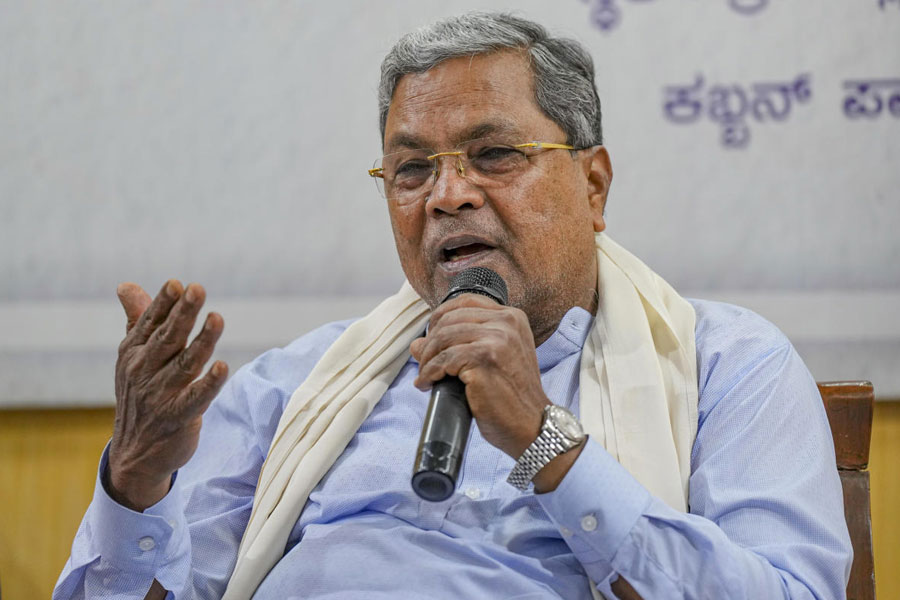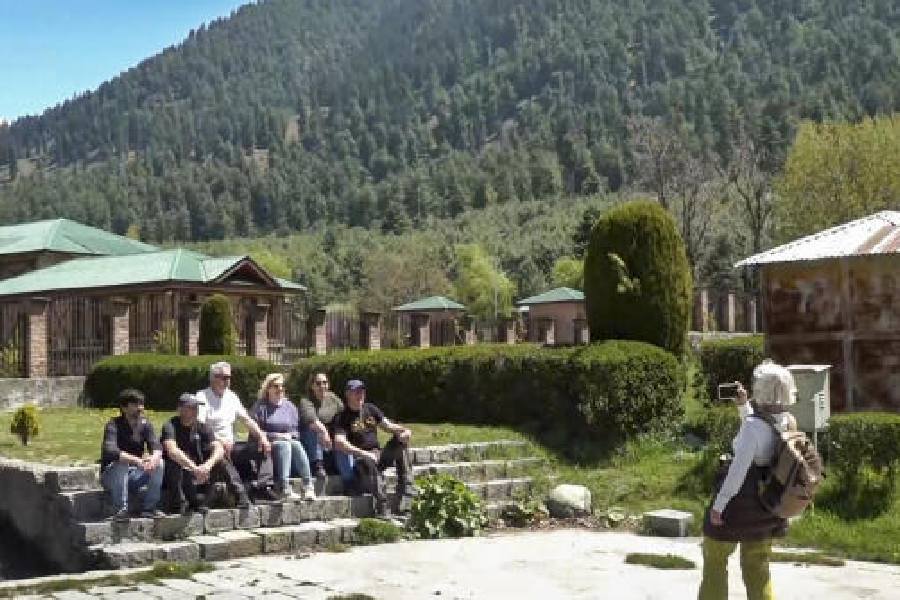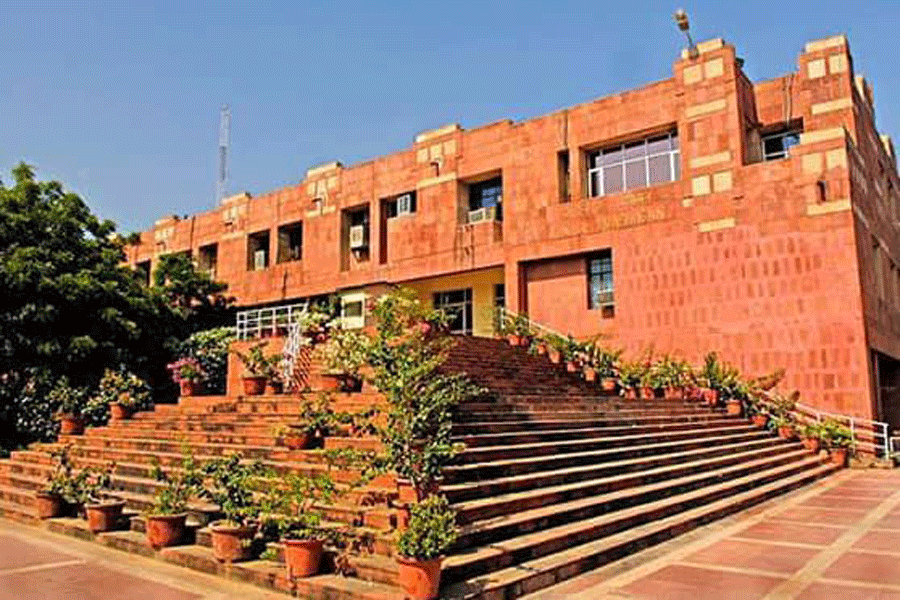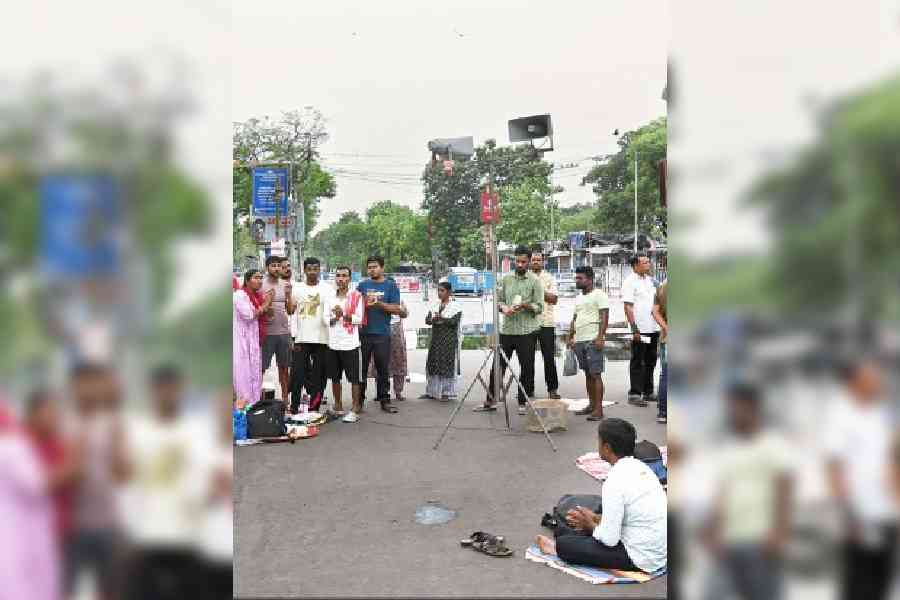 |
The silver lining in the field of disability management in the region is the Composite Rehabilitation Centre (CRC). Located within the Gauhati Medical College campus, CRC has fulfilled the long-felt need for an integrated set-up to deal with all kinds of disabilities — orthopaedic, mental retardation, visual and hearing impairment — all under one roof.
A visit to the CRC’S prosthetic and orthotic department was the turning point for 40-year-old G. Appaswamy, a railway mechanic at Tipam colliery, near Margherita in Tinsukia. His right foot had to be amputated after he met with an accident on a railway track in the coal mine. The doctors had no other alternative but to amputate it in order to save him.
Appaswamy was devastated. He gradually tried to walk with the help of crutches. But after his doctor referred him to the CRC, which will now fit him with an artificial limb, he is all smiles: “I will be able to run around again,” he beams. Within a short span — it was set up by the Union ministry of social justice and empowerment in 2001 — CRC has brought back smiles to many people’s lives. Prior to its inception, “affordable” rehabilitation and treatment was a far cry for the physically and mentally challenged of the region.
“Dearth of trained professionals still poses a major hurdle in the field of disability management in the Northeast. But we are hoping the Centre will be able to overcome this obstacle,” says Harish Sonowal, commissioner of the state social welfare department.
The CRC has plunged into the task of developing adequate human resources with alacrity. It has already conducted 19 short-term programmes in which 700 grassroots-level workers like Anganwadi staff and PHC nurses were benefited. Its awareness campaigns also targeted over 650 students and teachers. This year, the centre has started two one-year diploma courses — a diploma in special education (mental retardation) and another diploma in hearing, language and speech.
“We provide comprehensive rehabilitation facilities and distribution of aids and appliances like tricycles, wheelchairs and hearing aids to persons with disabilities, sometimes also free of cost,” says Lt. Col. P.J. Soundaraj, director in-charge of the centre.
During 2001-02, rehabilitation services were rendered to 4,166 persons with disabilities. “The services were stepped up between April and July this year and 2,155 people have been benefited. Altogether 31 wheelchairs, 73 tricycles, 77 hearing aids and 103 other items were distributed to persons with disabilities,” he adds.
In order to render rehabilitation services to persons with disabilities right at their doorsteps, the centre has also conducted three assessment camps at Goalpara and Darrang districts in Assam and Zunheboto district in Nagaland. “In the course of these camps, 34 wheelchairs, 54 tricycles, 132 hearing aids and 152 other items have been distributed,” the director in-charge says.
Besides physical disability, the centre is also involved in rendering service to the mentally challenged. It was a blessing in disguise for three-year-old Richa Adhikari’s family when after a detailed diagnostic evaluation in the department of clinical psychology as well as special education, the autistic child attended the Centre for Behavioural Intervention and Special Education for one year. “A marked improvement was noticed in her behaviour and she started performing her daily activities independently. She also began responding whenever she was called and even started playing with her peers,” observes Richa’s mother.
The speech therapy unit of the centre also has many such success stories to its credit. Of them one is interesting because of its rarity — the patient was suffering from puberphonia. In these cases, the normal pubertal voice change does not occur, because of which a man’s voice sounds like that of a woman’s.
“But the 23-year-old patient in question has recovered markedly now — after a few sessions of therapy. His voice, which was previously around 250 hz (female pitch), has changed to an optimum pitch of 125 hz (male pitch). The stabilisation of the optimum pitch is in progress,” says Lanu Waneikhup Aimol, assistant professor (speech and hearing) of the centre.
Apart from providing educational aids like Braille equipment, mathematical kits and other devices to assist children with visual disability, the CRC has also taught users and their guardians to use these “teaching-learning materials”. In this connection, it even conducted a short-term training programme on “Braille teaching and orientation and mobility” for Integrated Education for Disability (IED) workers under the district primary education programme in Darrang district recently.
“Participants were blindfolded and asked to negotiate through the environment — familiar and unfamiliar, to experience the feeling of being blind,” says Devi Lal, orientation and mobility instructor at the centre.
Countries and societies are now looking at disability as a social issue and not as a medical one, as is the case in India where disability is still considered a social stigma. Many of the disabled remain unemployed in spite of the fact that they also comprise a large chunk of the total potential work force.
This is why the vocational rehabilitation department of CRC is gaining in popularity among both the physically and mentally challenged people. For 35-year-old Abdul Wali, for instance, it was a long journey from the “ill-equipped” deaf and dumb school in Kahilipara to many other private rehabilitation centres. He is now enjoying his typewriting lessons at the CRC which he says holds regular classes that are free of cost. “Once he gains enough confidence to run his business independently, we will open a typewriting institute for him,” promises his brother.
Eighteen-year-old Thomas Todi was also born a mentally retarded child but at the composite rehabilitation centre he learnt how to count. “Now he is running a pan shop in front of our house and earning independently,” says his mother with pride.
Persons with disabilities need services and support for rehabilitation instead of relief. They also desire training for useful work instead of prolonged dependency. “We thus try to suggest self-employment after thorough evaluation and counselling,” says Shailaja Singh who is a clinical psychologist at the centre.
However, though the centre is “comprehensive” its resources are limited. The staff strength is thin — only 25 — as is its space. The centre is now functioning from a part of a building allotted to it by the Gauhati Medical College Hospital. “Sometimes, because of various constraints, we find it very difficult to cater to all our patients,” says Soundaraj.
The Assam government, however, has a lot of expectations from the centre, not the least of which is developing manpower resources. It is also ready to extend all kinds of help for it to begin functioning soon as a full-fledged institute. “Land has already been allotted to the centre for construction of a permanent building,” says the social welfare department commissioner.
Soundaraj is optimistic. “This is only the beginning. After we construct a permanent building, we will conduct three more diploma courses, four degree-level courses and BEd (special education — mental retardation) of M.P. Bhoj (open) university and the Rehabilitation Council of India on distant mode. The spadework has already been started and could be ready by next year,” he says.










